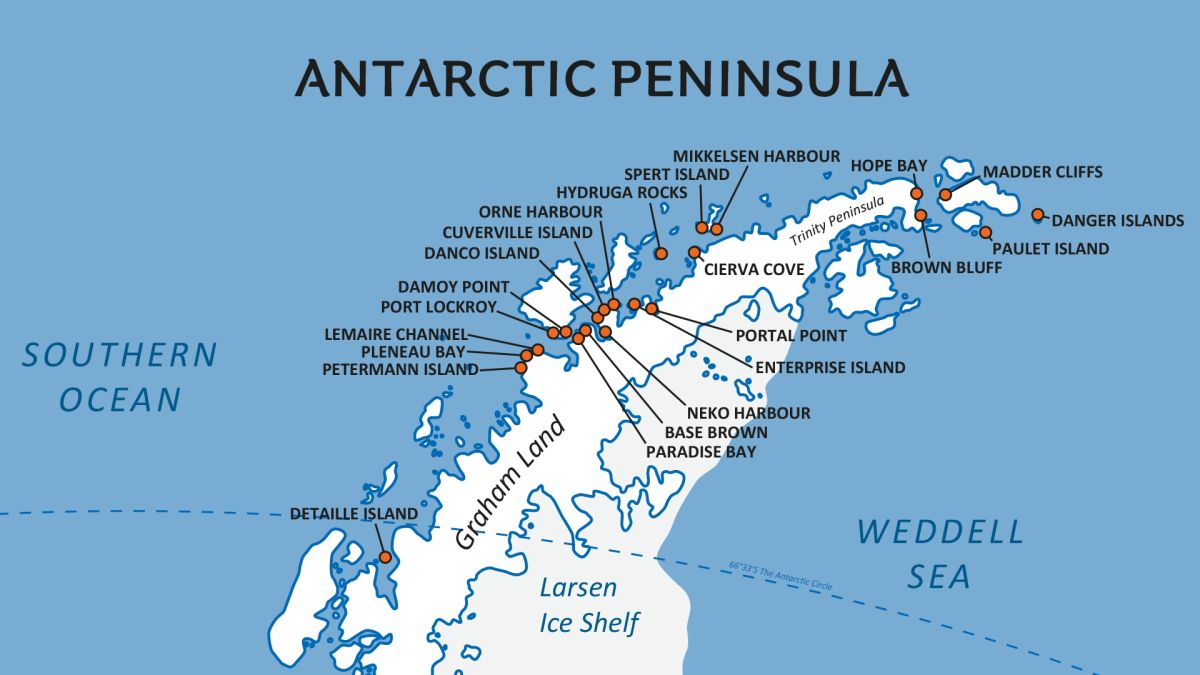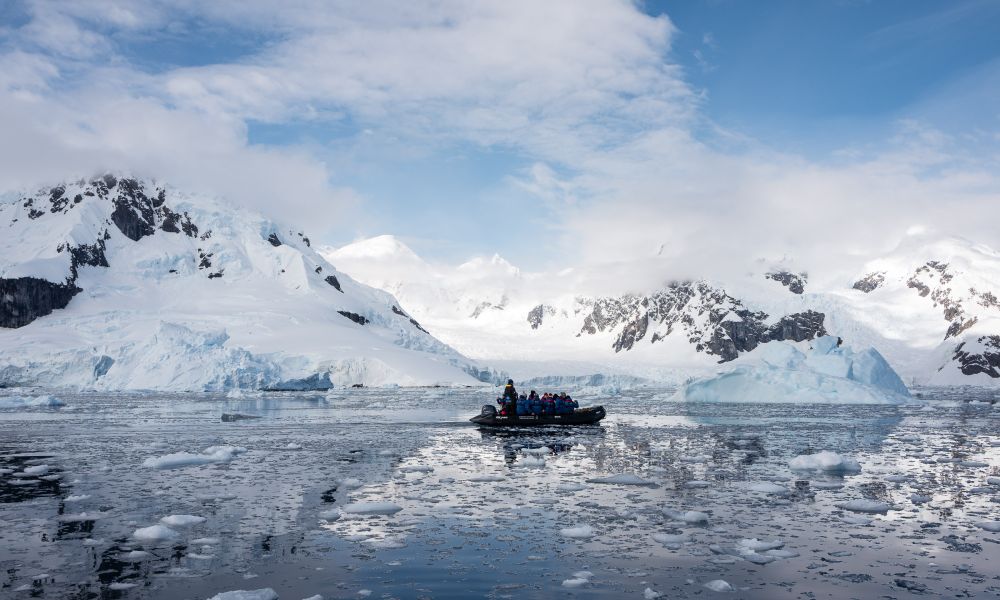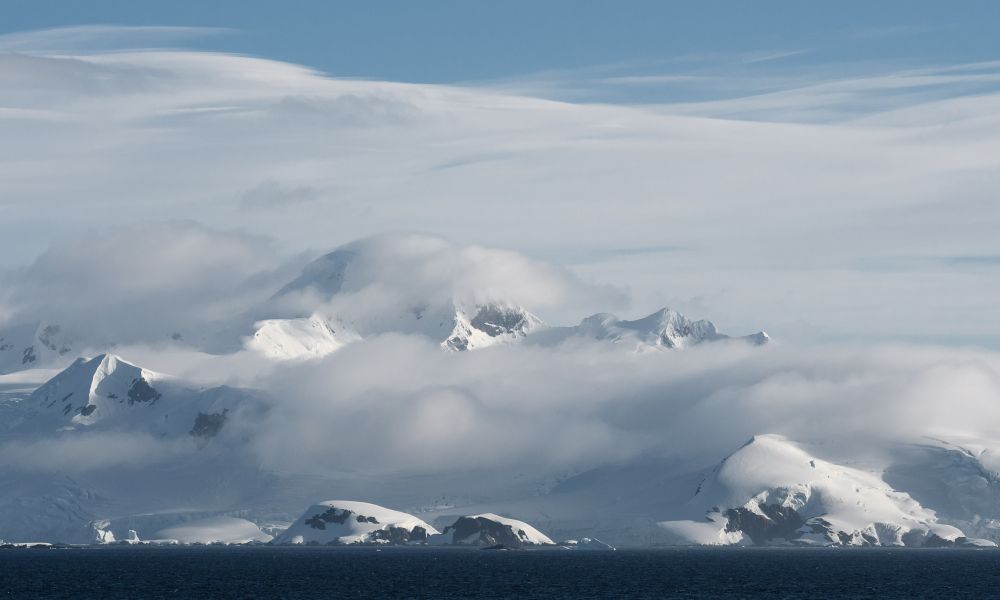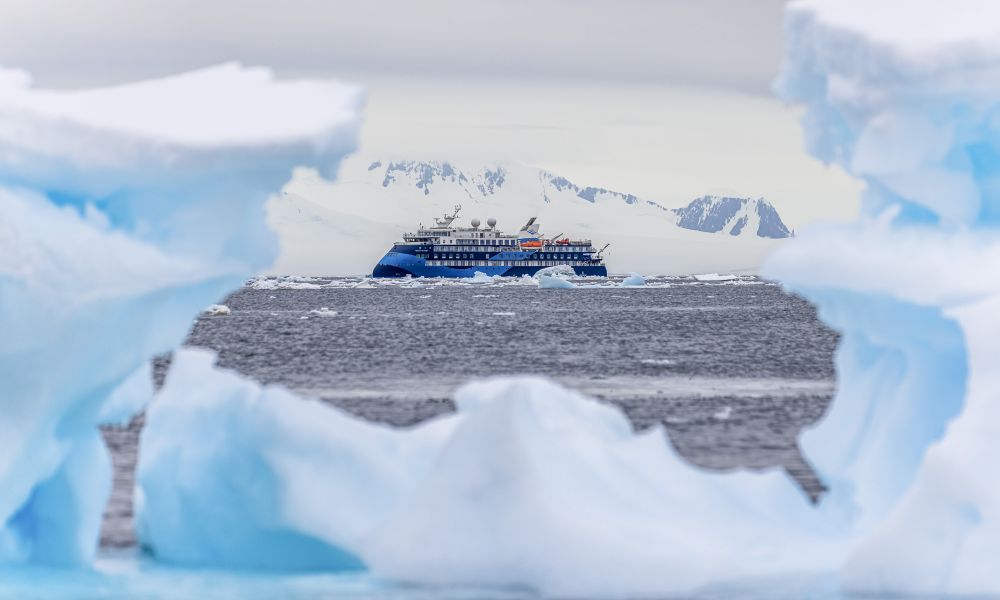Exciting changes are on the way!
As part of our merger with Polar Latitudes, we’re refreshing key elements of our website to reflect this new chapter. Discover more in our latest news update.
The Antarctic Peninsula is the northernmost part of mainland Antarctica, stretching about 1,300 kilometres (800 miles) toward South America.
It’s the most accessible and biologically rich region of Antarctica, drawing both scientists and explorers alike. Unlike the vast ice sheets that cover most of the continent, the peninsula’s landscape is more varied, featuring towering mountains, deep fjords, glaciers, and ice-covered islands. The Graham Land portion of the peninsula, to the north, is particularly mountainous, with peaks rising over 2,800 meters (9,186 feet), many of which remain snow-capped year-round.
One of the most striking features of the peninsula is its rapidly retreating glaciers. The warming climate is causing these ice masses to melt faster, transforming the coastline. In places like Marguerite Bay and Paradise Harbor, you’ll find massive icebergs calving from the glaciers, some towering several stories high before they drift off into the Southern Ocean. The peninsula's rugged coastline is carved with deep bays and fjords, which not only provide shelter for ships but also serve as critical habitats for marine wildlife like penguins and seals.
The Gerlache Strait, which runs between the peninsula and the offshore Palmer Archipelago, is one of the most dramatic waterways in Antarctica. It’s flanked by steep, ice-clad mountains and is often dotted with icebergs. This narrow passage is a prime area for marine life due to the nutrient-rich waters that swirl through it, attracting krill, whales, and seabirds.
Despite the peninsula’s harsh conditions, its geographic position — extending northward from the Antarctic Circle — makes it milder than other parts of Antarctica. During the summer, temperatures along the coast can hover just above freezing, making it one of the few parts of the continent where ice-free land exists for part of the year. This creates unique habitats, particularly in places like the Antarctic Sound, where rocky outcrops emerge, providing nesting grounds for seabirds and breeding areas for penguins.
The Antarctic Peninsula’s geography is constantly evolving, shaped by the forces of ice, wind, and water. It’s a landscape of contrasts: towering mountains and endless ice, yet also pockets of life clinging to the rocky shores and in the cold Southern Ocean. Every part of this peninsula tells a story of the delicate balance between nature’s beauty and its fragility in the face of a changing climate.
Facts about Where is the Antarctic Peninsula?
- Antarctica
- Antarctic Peninsula







